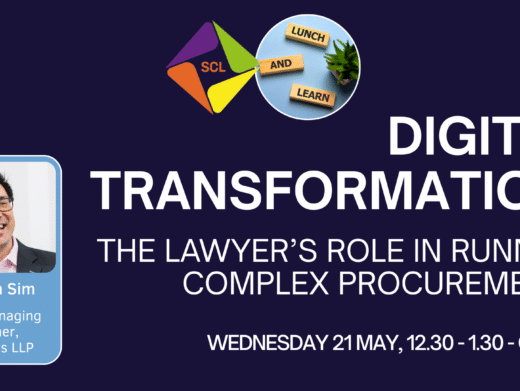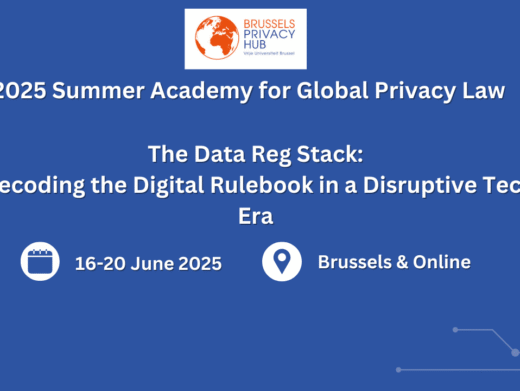Andrew Terrett is a legal information systems advisor withMasons Solicitors. He is also the author of The Internet – BusinessStrategies for Law Firms to be published by the Law Society later this year.He can be contacted at andrew.terrett@masons.com
‘Success in the marketplace today is directly proportional to theknowledge that an organisation can bring to bear, how fast it can bring thatknowledge to bear and the rate at which it accumulates knowledge.’ –TomPeters
These days, you would have to actively avoid the business press not to haveheard of knowledge management (KM). The hypothesis is seemingly straight-forward– the successful exploitation of ‘knowledge assets’ or so-called‘intellectual capital’ is the key to competitive advantage. Thus the goal isto discover what the organisation knows, where organisational knowledge lives,establish how it can be found in future, made useful and relevant and how it canbe delivered to the right person at the right time. But is it just anothermanagement fad, a re-packaging of ideas by management consultancies who arelooking for a new revenue stream post-millennium bug or does it offer newtechniques and methods that can introduce a significant competitive advantage?Then there is the more fundamental and practical question – even if it is agreat idea, can it work in a law firm environment?
Defining Knowledge Management
Humankind has spent over 2000 years attempting to define knowledge and we arestill no nearer to a definition. Thus it is unlikely that the professionalbusiness community will add anything new here. As for defining knowledgemanagement, at present it is no more than a series of ideas and themes. The termitself is probably an oxymoron. Knowledge cannot be ‘managed’ per se – itis too amorphous. Only the systems that filter, categorise, condense and deliverknowledge can be managed, and that will probably involve the use of informationtechnology.
Knowledge assets will exist in many places – on paper, in electronicrecords, in the business logic that defines corporate systems (whether IT orotherwise) or in people’s heads. The essence of a knowledge managementstrategy in a law firm context is getting as much knowledge as possible out ofthe information cul-de-sacs (such as people’s heads) and embedded intocorporate systems, and thus into the heads of others so that it can be re-used.What every law firm seeks (or should seek) is a methodology that allows thesystematic capture, development and use of legal and quasi-legal knowledge.
The Vocabulary of Knowledge Management
Most introductions to KM begin with a description of some fundamentalconcepts; data, information and knowledge and perhaps beyond knowledge (in apurely theoretical sense) there is wisdom. In a commercial sense, beyondknowledge, there is action – ie with sufficient knowledge, knowledge workersbecome capable of making competent decisions. This model ofdata/information/knowledge is helpful up to a point but breaks down when oneattempts to determine at what point information becomes knowledge.
Data is raw facts and figures. Information might be defined as ‘dataprocessed into meaningful patterns’.1 Davenportand Prusak identify five methods by which knowledge workers add value toinformation: contextualisation – users gain an understanding of the purposefor which the data was gathered; categorisation – users understand how asingle piece of information fits into the overall body of knowledge and can gaineasier access to it; calculation – the data may have to be analysedmathematically or statistically; corrected – knowledge workers or informationprofessionals may have to remove errors; condensed – the data may have to besummarised.
Thus while:
836 – TOR – 10.30 – T3 – G36
is data, if it is given a proper context it is also information – Flight836 to Toronto leaves at 10.30 from Terminal 3, Gate 36. It is also possible tohave knowledge about a piece of data. For example a travel agent who knows thatthat this flight is generally quicker than the 1pm flight is knowledgeable. Butyour willingness to act upon this piece of knowledge depends on a relationshipof trust. You are more likely to trust a travel agent than a source providingthe same information on an anonymous Internet bulletin board.
Without necessarily attempting to define knowledge, we can look at theprocess of knowledge creation and diffusion in different ways. We can divideknowledge into core, advanced and innovative knowledge. Core knowledge is thatwhich is required for daily operations. Advanced knowledge allows the firm to becompetitive and innovative knowledge is that which allows the firm to lead theindustry.2 A different way of looking at knowledgeis to divide it into explicit knowledge (that which is formal and systematic,can be easily processed, transmitted electronically and stored in databases) andtacit knowledge (that which is ‘highly personal and hard to formalise, makingit difficult to communicate or share with others’).3
So much for the theory. What is the reality?
The Legal Information Environment
Managing knowledge in a law firm is a key problem, arguably the greatunsolved problem from an IT perspective. Most law firms now recognise that thedocuments they create are a huge yet untapped asset. At the same time, lawyerswant to work in a perfect information environment; an environment where exactlythe right type and the right amount of information is delivered to them whereverthey may be when they need it. By contrast, lawyers, like most other knowledgeworkers, are drowning in a sea of irrelevant information and trivia; newspapers,e-mails, faxes and paper documents are all part of the problem and new deliverymechanisms are being introduced all the time – the mobile phone and thepersonal organiser for instance. Information technology only makes a badsituation worse.
Given the nature of their work, lawyers are in an impossible position –they need to know about every potentially relevant legal development. Theycannot afford not to know about a case or issue of public policy that may affecttheir clients’ interests. Thus they have to be bombarded with information –much of which is trivia. Only a minute percentage is directly relevant. Lawyersare also their own worst enemies – they are natural information hoarders.Given a large office containing filing cabinets and numerous shelves, they feelalmost duty-bound to fill them. Many lawyers may consider information hoardingas necessary for their professional survival. The logic is compelling; byhoarding information, it is always available – there is no need to competewith other lawyers for scarce copies of practitioner journals. They can also actas a gatekeeper on their own information, ensuring that only certain individualsgain access to their own personal know-how collection. This obsession withinformation hoarding reaches its logical conclusion when lawyers equate monopolyownership of information resources with personal indispensability – aninsurance policy against redundancy. Implementing knowledge management in thistype of environment would be challenging to say the least.
The Role of Document Management and ‘Infobanks’
Since the early 1990s many law firms have invested in document management‘solutions’ – products which allow the user to create a profile of adocument being created and then search for those documents at a later date. Inaddition, they may have developed their own know-how projects. Many of thelarger firms have spent significant time and effort establishing so-called‘infobanks’ – corporate depositories for legal information that one couldnot find in either traditional legal textbooks or practitioner texts. A typicalinfobank might include firm precedents, information on foreign lawyers,information about counsel including CVs, papers from conferences (either givenor attended), useful counsel opinions, court transcripts, and so forth. Theseare important ventures which encourage lawyers to recognise the value in sharinginformation between departments and offices. But they are only one aspect of amuch richer model that is ‘knowledge management’.
Endnotes
- Lindsey Scott, A., Xerox Professional Services, Knowledge Management – how to implement it using document management. A paper presented at Document ’98, a conference organised by Miller Freeman and staged at the NEC Birmingham, 12th-15th October 1998.
- Zack, M. H., Developing a Knowledge Strategy, California Management Review, Vol. 41 (3) pp. 125-141.
- Nonaka, p.8.
- See for example, Davenport, Saving IT’s soul: Human-centred Information Management, Harvard Business Review, March–April 1994, p.121.
- An expert system is a computer program that attempts to mimic the way in which human beings reason through the use of IF..THEN rules. By responding with yes, no and maybe to various questions, it is intended that the program can deduce what the problem and the solution might be. An example of a rule embedded in an expert system designed to fix a photocopier might be ‘IF paper is jamming at point X, THEN check the placement of the toner cartridge.’ The expert system would then ask the user if he/she has checked the placement of the toner cartridge and, based on the response, the system would ask further questions, until eventually, the problem is solved.
- For more on the organisation as a complex ecology, see Thomas Davenport’s book – Information Ecology.
The Role of the Intranet
In many of the larger law firms, ‘the intranet’, that is an internal Website, is perceived as being a useful new way of addressing the issue ofknow-how. But this assumption is flawed. The mere existence of a particular typeof technology does not turn a knowledge-hoarding organisation into aknowledge-sharing one just as the existence of a telephone system does notnecessarily lead to incisive intelligent conversations. The replacement of anexisting ‘infobank’ technology with a more up-to-date and more user-friendlyWeb-based system is certainly a forward step. But in terms of knowledgemanagement it can only be part of the solution and not an end in itself. Studieshave shown that managers get two-thirds of their information and knowledge fromface-to-face meetings or phone conversations. Only one third comes fromdocuments.4 Thus, a knowledge management strategythat focuses entirely on documents and on intranets as a mechanism for documentdelivery is a one-dimensional strategy and unlikely to create the more radicalchange that is required.
Knowledge management is people management and as much about cultural changeas the implementation of intranets. What most law firms have achieved so farrelates to the exchange of explicit knowledge through documents, ie documentmanagement systems and intranets. While this is important, lawyers also need tofocus on tacit knowledge – the expertise gained from years of experience thatcannot be easily described in a document and upon its exchange – creatingshared mental models and learning through observation, imitation and practice.This means encouraging lawyers to exchange their ideas and experience.Information technology is the tool: a means to the end not the end in itself.
An Example of Tacit/Tacit Exchange
Xerox are probably best known as the manufacturers of photocopiers. There isa (possibly apocryphal) story of how Xerox spent many years and many thousandsof dollars back in the 1980s attempting to build a so-called expert system5(a type of artificial intelligence-based computer system) that would encapsulateall of the knowledge held by their various employees about how to fixnotoriously complex photocopiers. The project team lumbered from crisis tocrisis and, after many years, were still no nearer to producing a workingsystem. In the end the management of Xerox sacked their chief technologist andinstead hired an anthropologist to observe the work of the photocopierengineers. The conclusion of the anthropologist was that the expert systemproject should be abandoned altogether and instead all engineers should beissued with two-way radios. That way, this particular group of experts could bebrought together over the airwaves at any time to discuss a problem that one oftheir number might have. Xerox duly purchased the two-way radios and the expertsystem project was abandoned never to be completed. Technology that attempted tocapture knowledge was not the solution. Instead, the solution was a‘technology’ (ie two-way radios) that facilitated the sharing of experience.What was required was unhindered information flow and the ability togroup-tackle problems.
The Xerox story illustrates the importance of socialisation; sharedexperiences allowing for tacit-tacit knowledge exchange via two-way radios. Thereal-world problems could not be solved by trying to capture all of theengineers’ knowledge in a computer program or even in a document. Instead,technology was used to improve communication. There is a lesson here for anywould-be Chief Knowledge Officers. Again, technology is important but only as atool – the means to an end. There is also a lesson for senior partners. As faras knowledge management is concerned, a law firm is a complex organism6where individual lawyers and support staff are information nodes. Casualinformation exchanges are the lifeblood of the firm (eg ideas, rumours,opinions, suggestions, problems and concerns). By focusing entirely on thefinancial aspects of the firm and consequently reducing the opportunities forcasual information exchange, for example by limiting coffee/cigarette breaks orchats over the water cooler, the employer can be in danger of limitingopportunities for sharing information and knowledge about the firm, its clientsand new ways of thinking about legal problems.
Knowledge Management is People Management
So while intranets and IT have a role to play, it is equally important tofocus on people and the cultural values that are engendered within theorganisation – in other words, this is as much an issue for Human Resources asIT or library professionals. Any KM project should also be a project that worksin conjunction with existing initiatives. Knowledge management is a long-termproject that requires sustained and combined effort. It must be embedded intothe fabric of an organisation. This means changing individual behaviourpatterns. This can be achieved in part using the blunt instrument of incentivesand rewards – building requirements into annual assessments and pay reviews.However as soon as such incentives are removed, the amount of knowledge sharingdecreases. What must be sustained in the longer-term is a change to the‘psychological contract’ – the unwritten rules and customs that define theculture of the firm.
Conclusion
Unlike Business Process Re-engineering, Quality Management and other greatinventions of the management consultancies, Knowledge Management actually has agreat deal to teach law firms. Unfortunately, technology such as the intranet isnot the ‘silver bullet’ we would like it to be. Instead it is merely adistribution mechanism for documents and data. The real focus for a knowledgemanagement initiative must be directed at people and changing individualbehaviour within the workplace, as well as new technology such as intranets.
Endnotes
- Lindsey Scott, A., Xerox Professional Services, Knowledge Management – how to implement it using document management. A paper presented at Document ’98, a conference organised by Miller Freeman and staged at the NEC Birmingham, 12th-15th October 1998.
- Zack, M. H., Developing a Knowledge Strategy, California Management Review, Vol. 41 (3) pp. 125-141.
- Nonaka, p.8.
- See for example, Davenport, Saving IT’s soul: Human-centred Information Management, Harvard Business Review, March–April 1994, p.121.
- An expert system is a computer program that attempts to mimic the way in which human beings reason through the use of IF..THEN rules. By responding with yes, no and maybe to various questions, it is intended that the program can deduce what the problem and the solution might be. An example of a rule embedded in an expert system designed to fix a photocopier might be ‘IF paper is jamming at point X, THEN check the placement of the toner cartridge.’ The expert system would then ask the user if he/she has checked the placement of the toner cartridge and, based on the response, the system would ask further questions, until eventually, the problem is solved.
- For more on the organisation as a complex ecology, see Thomas Davenport’s book – Information Ecology.




